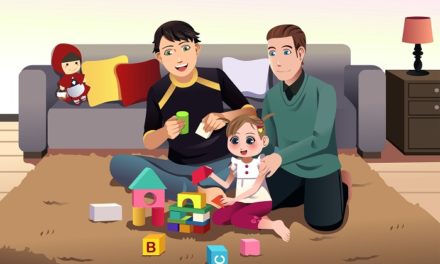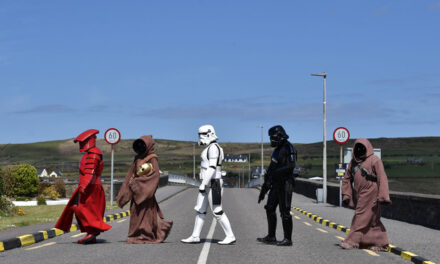I use folk dance as a tool to instill in the children, in addition to the love of dance, the love of Hungarian culture and the importance of a livable, functioning and self-developing community, says Dömötör Leidinger.
The young man born in Pomáz is a folk dance teacher, choreographer, farrier, and proud father of two young children. He moved with his partner, Anna, to Újtelek, one of the smallest settlements in Bács-Kiskun, a few years ago.
He organized this year's seven-site equestrian tour of the Fordulj Kispej Lovam Dance Ensemble in the area. I got to know him in connection with this, and we sat down to talk on the veranda of his house in Újtelek about folk dance, old peasant culture, self-sustaining farming, the essence of dance teaching, posture and standing, thinking in a system, and how the interest of a city child turns in such a direction.
- My mother is a teacher, my father is an architect. My mother enrolled in folk dancing in Békásmegyer in the Kincső Dance Group while still in primary school. In the beginning, I wasn't really interested in folk music and dance, I went because of the good community. Then, around the age of 13-14, a turning point occurred. We learned Szatmári dances, which piqued my interest, which made it even better, and that's when I fell in love with folk dance. When I was in high school, I threw myself into the dance hall life in Budapest. I was very much absorbed by this subculture, my dress was adapted to it, I wore pants, shirts, and hats. But this really doesn't have much to do with the real peasant culture, I could say, we were actually licking the foam off the top of the cake, he says with a smile.
Turning point: he turned to peasant farming
– I started riding around the age of fourteen through my brother. He studied as a geographer, and at the university he became very close friends with one of his lecturers, dr. With Gábor Géczy, the founder of Magfalva, who was a popularizer of traditional self-sufficient peasant farming.
He lived in a yurt for half a year, learned to ride a horse, and through him I became even more interested in this kind of life, which went very well with dance and folk music
– he told about the turning point in his life where he wanted not only to talk about peasant culture, but to make it a part of his everyday life, to conduct self-sustaining farming in the village, and to raise his children in such an environment.
He worked as a farrier
He was so interested in the traditional peasant way of life that after graduating from high school, he lived in Transylvania for more than half a year, at a stable in Stana, shepherding and leading horse tours. He went to shoe and nail horses with his veterinarian host. He liked it so much that he wanted to learn the trade. After he came home, he started a professional training at OKJ, but it didn't give him much, so instead
he looked for a master, Ferenc Antalicz, from whom he learned the basics, and then started working as a farrier, but dance continued to accompany him in his life.
He danced at an amateur level in the Kincső Dance Group and went to dance halls on weekends. In the meantime, he started teaching in kindergartens, elementary schools, and in small groups, then for a few years he got the opportunity to teach in the Lenvirág Dance Group in Budakalás, which he later took over as the leader.
He came to another crossroads
His farrier offered to give him a larger stable, which would require regular work. He had to choose, and in the end he chose dance teaching, because he thought he could move more people, keep them on the right path, and guide them.
- I taught in many places, from Dunaföldvár, through Akasztó, Kalocsá, Baja, Pécs, from which the permanent places, Akasztó and Nagybaracska, were formed. Folk dance is compulsory in the elementary school in Akásztó, I teach here, I also have a specialized group, and I formed a group of school children called the Szikes Dance Group. But I go wherever I am asked to teach dance, to summer camps, I also hold dance houses, groom, and we also have performances with the Fordulj Kispej Lovam Dance Ensemble - he says, and then he also talked about the method he follows in teaching dance.
– It is important that I teach the children the basics of dance movement first. In the first year, they learn balance exercises to folk music, in the second year they can already deal with the basic motifs, and in the third year the children reach the point where they can be taught regular dance figures.
You can build well on a strong foundation, and this is missing in many ensembles. I use folk dance as a tool to instill in the children, in addition to the love of dance, the love of Hungarian culture and the importance of a livable, functioning and self-developing community.
So that they don't live in virtual reality, but in real life. Keeping the culture gives identity, broader and narrower community, which is very much needed in today's world. Folk dance is an excellent tool for this, and it is also excellent for movement development.
You have to immerse yourself in the peasant culture
In the old peasant culture, people were still able to build a house, provide themselves and their families with food, had time to have fun, and understood people, animals, and plants. They had enormous knowledge, knowledge that helped organize their everyday lives. Most city children, if they came here, would not recognize plants and animals. And if he were to get out of the city, he wouldn't be able to survive. Dance was formed from everyday movements, you can really understand it if you immerse yourself in that life. You have to learn to mow, milk a cow, ride a horse, get up at dawn, live there for a while, tidy up the garden, cook with the old women.
You have to sit down and talk to people who still live like this. It would be important for the folk dancers to deal with this as well.
This is also why we invented the Fordulj Kispej Lovam Tábor in Pomáz for boys practicing dance. There, they not only learn to dance, but also ride horses, and participate in economic work, carrying hay and making adobe bricks. There are those who have been practicing horse archery ever since.
And the good thing is that not only do they take on this role in this one week, but in addition to the dance, they go to one of the nearby stables and help with farm work in exchange for riding.
Boys need this much more, they are a bit lost, the virtual world can absorb them better. The result of globalization is uniformity, the disappearance of national self-consciousness, and the breaking up of communities. You have to find a healthy identity for yourself in this environment.
The folk dance, the developing community, helps with this, we can help with this with our personal lives and by passing on those things, the Hungarian culture, which can ensure our existence and survival here in the middle of Europe.












